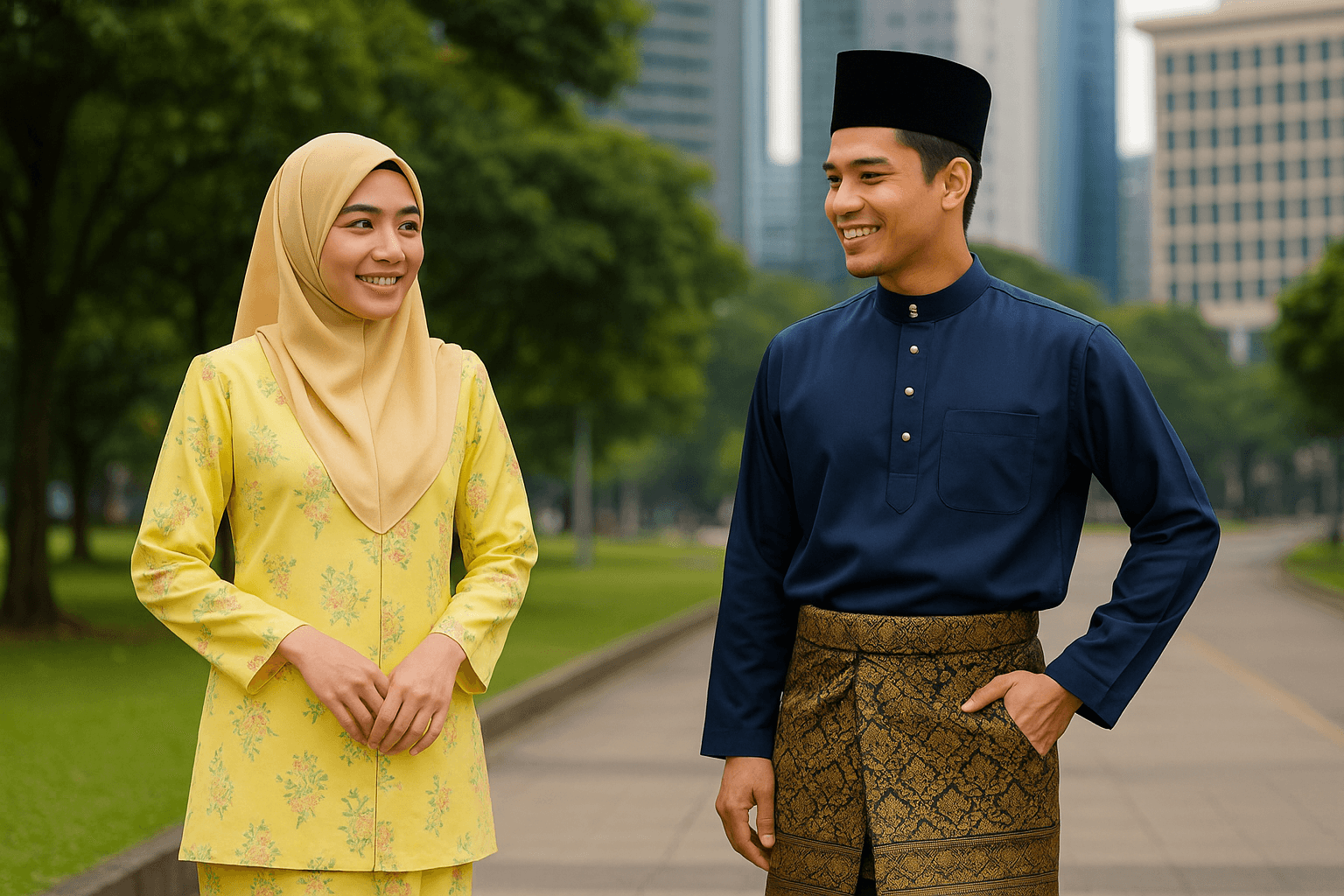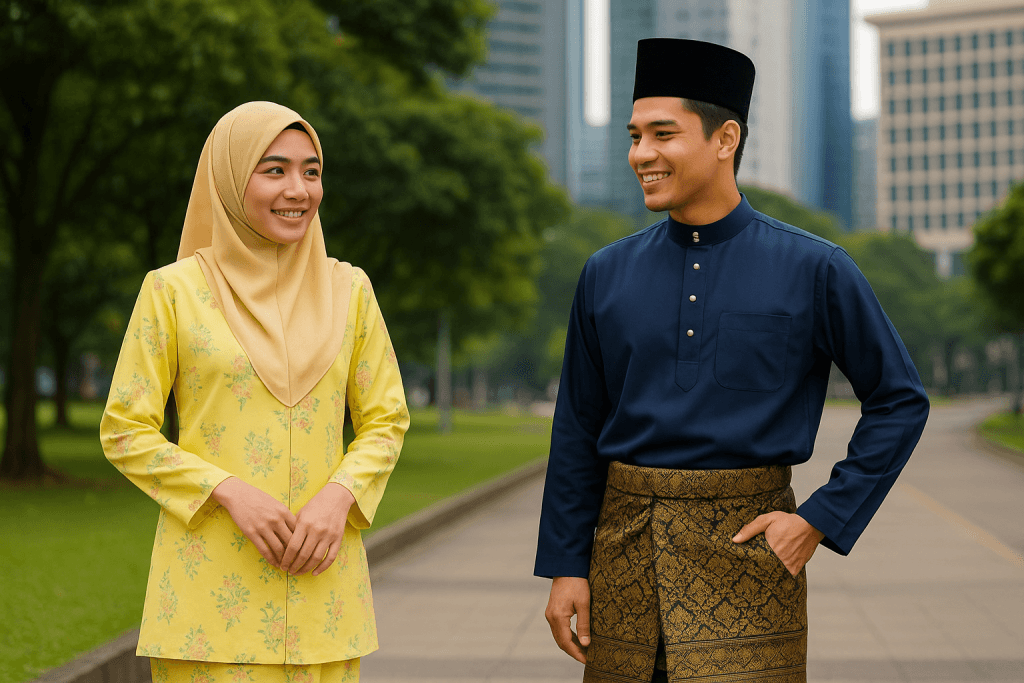Traditional Attire: Baju Kurung and Malay Identity represents more than just fabric and design. It embodies the essence of Malay culture, faith, and social values. This attire has stood the test of time, transcending generations and preserving a sense of belonging for the Malay community across Southeast Asia. By exploring its history, symbolism, and evolution, we uncover how this attire functions as both a cultural marker and a modern expression of identity.

The Origins of Baju Kurung
The roots of Traditional Attire: Baju Kurung and Malay Identity trace back several centuries, closely linked with Malay kingdoms and Islamic influence in the Malay Peninsula. The attire evolved as a modest outfit suitable for tropical climates while adhering to cultural and religious norms. The baju kurung for women consists of a loose-fitting blouse paired with a long skirt, while men traditionally wear a long-sleeved tunic with trousers and a samping, a decorative cloth wrapped around the waist.
Cultural Influences in Design
Islamic principles of modesty shaped the attire.
Malay craftsmanship added floral and geometric motifs.
Trade exchanges introduced fabrics like silk, cotton, and songket.
These influences show how Traditional Attire: Baju Kurung and Malay Identity has been both adaptive and rooted in tradition.
Symbolism of Baju Kurung
Wearing the baju kurung is not merely about aesthetics; it conveys layers of meaning tied to community, religion, and personal identity.
Faith and Modesty: The attire aligns with Islamic values, covering the body while maintaining elegance.
Cultural Pride: It distinguishes the Malay community and affirms their shared heritage.
Social Cohesion: Worn during festivals, weddings, and national ceremonies, it unites individuals under one cultural banner.
Thus, Traditional Attire: Baju Kurung and Malay Identity is a powerful visual language of belonging.
Baju Kurung and Gender Identity
The attire has distinct forms for men and women, yet both emphasize dignity and modesty.
For Women: The blouse and skirt combination allows comfort while exuding femininity. Accessories like shawls and jewelry add personalized touches.
For Men: The tunic, trousers, and samping represent authority and respectability, often paired with a songkok (cap).
By wearing these forms, Traditional Attire: Baju Kurung and Malay Identity affirms gender roles and cultural expectations within Malay society.
The Role of Fabrics and Colors
Fabrics used in baju kurung often reflect economic status, geographical origin, and personal preference. Songket woven with gold threads symbolizes wealth and prestige. Cotton provides comfort for daily wear. Silk suggests elegance during formal events.
Colors are equally significant. Bright hues dominate festive seasons, while subdued tones are preferred in solemn ceremonies. For example:
Red symbolizes vitality.
Green reflects faith.
Yellow historically represents royalty.
Through fabric and color, Traditional Attire: Baju Kurung and Malay Identity speaks volumes without words.
Evolution Across Generations
Though the baju kurung retains its traditional form, its designs have adapted to contemporary tastes.
Classic Styles: The traditional loose-fitting shape remains unchanged in many rural areas.
Modern Variations: Designers now experiment with fitted cuts, embroidery, and layering.
Global Influence: International runways showcase baju kurung-inspired collections.
This evolution demonstrates how Traditional Attire: Baju Kurung and Malay Identity balances preservation and innovation.
Baju Kurung in Festivals and Ceremonies
Festivals like Hari Raya Aidilfitri and weddings highlight the prominence of the baju kurung. Families often coordinate colors to represent unity. During national events in Malaysia and Brunei, government officials wear the attire to emphasize cultural authenticity.
Whether in prayer halls or banquet halls, Traditional Attire: Baju Kurung and Malay Identity remains central to collective celebration.
Cross-Cultural Influence
The Malay community is not isolated. Neighboring societies in Indonesia, Singapore, and southern Thailand also wear variations of the baju kurung. Each community adds local adaptations, yet the underlying symbolism remains intact.
This demonstrates how Traditional Attire: Baju Kurung and Malay Identity transcends borders, creating a shared Southeast Asian heritage.
Education and Transmission of Values
Children are often dressed in baju kurung during school events and national days, instilling cultural pride from a young age. Educational institutions emphasize the attire’s significance, ensuring that future generations understand the heritage attached to their clothing.
Through this, Traditional Attire: Baju Kurung and Malay Identity becomes an intergenerational bridge.
Baju Kurung in Popular Culture
Television dramas, films, and literature frequently portray characters in baju kurung to reinforce authenticity. Music videos and cultural performances also highlight the attire. This visibility strengthens the link between Traditional Attire: Baju Kurung and Malay Identity and contemporary culture.
The Global Stage
Diaspora communities across the world wear baju kurung during cultural events, showcasing their roots. In London, New York, and Sydney, Malay festivals display the attire as a proud emblem of identity. Fashion shows abroad also recognize the elegance of baju kurung as a timeless garment.
Here, Traditional Attire: Baju Kurung and Malay Identity functions as both cultural preservation and global representation.
Challenges in Modern Times
Globalization and Western fashion trends pose challenges to the prominence of the baju kurung. Some younger generations prefer jeans and t-shirts for daily wear. However, cultural organizations continue promoting the attire as relevant and stylish.
Despite these shifts, Traditional Attire: Baju Kurung and Malay Identity remains resilient through cultural pride and adaptation.
Sustainable and Ethical Practices
Modern designers now focus on eco-friendly fabrics and ethical production. By integrating sustainability with tradition, the attire evolves responsibly while retaining its cultural significance. This ensures Traditional Attire: Baju Kurung and Malay Identity stays relevant in global conversations on sustainability.
Conclusion
Traditional Attire: Baju Kurung and Malay Identity is not a relic of the past but a living tradition. It encapsulates faith, pride, and unity while adapting to modern tastes. From historical roots to contemporary relevance, the baju kurung continues to symbolize Malay cultural resilience and identity across generations and borders.


